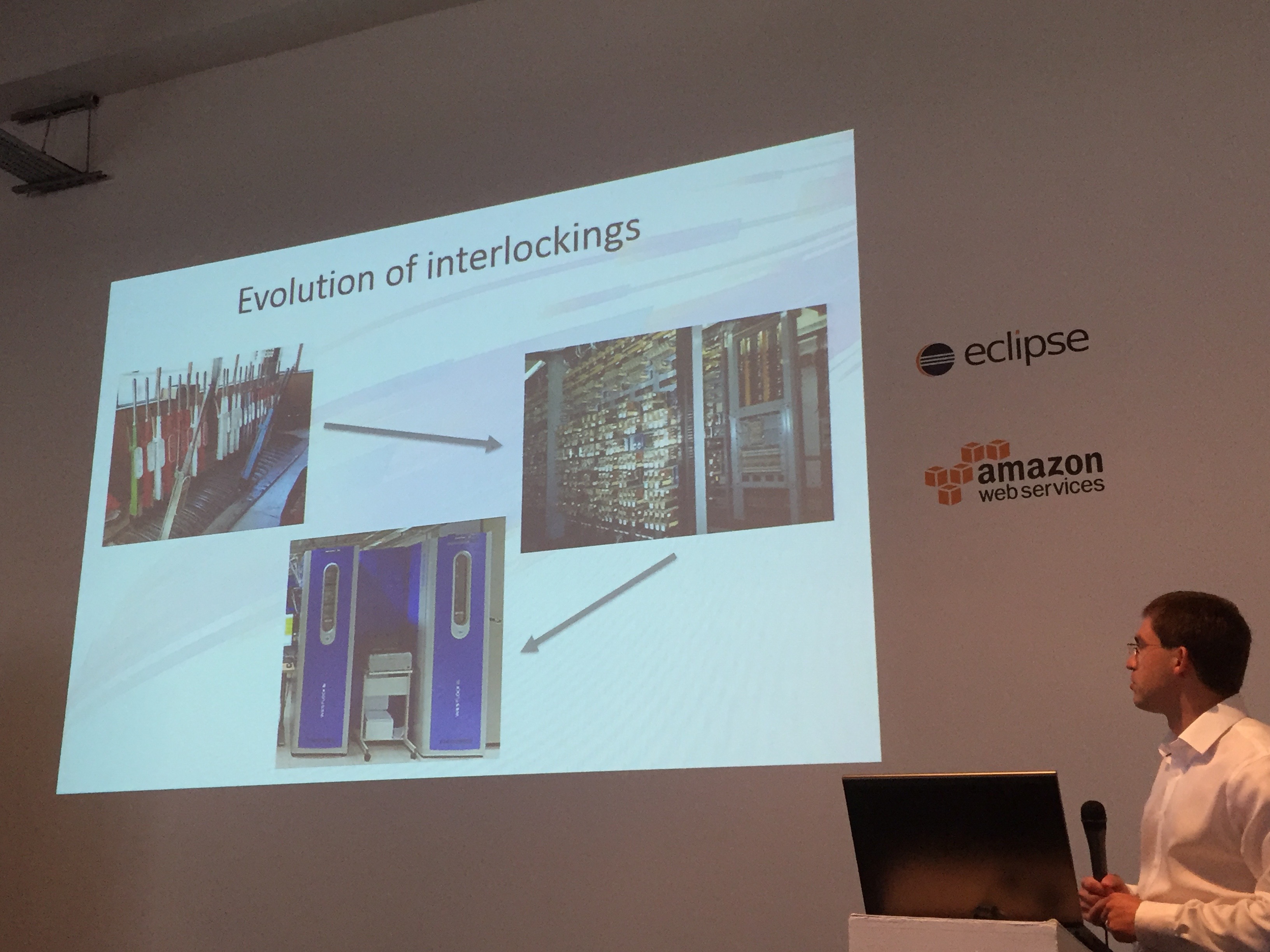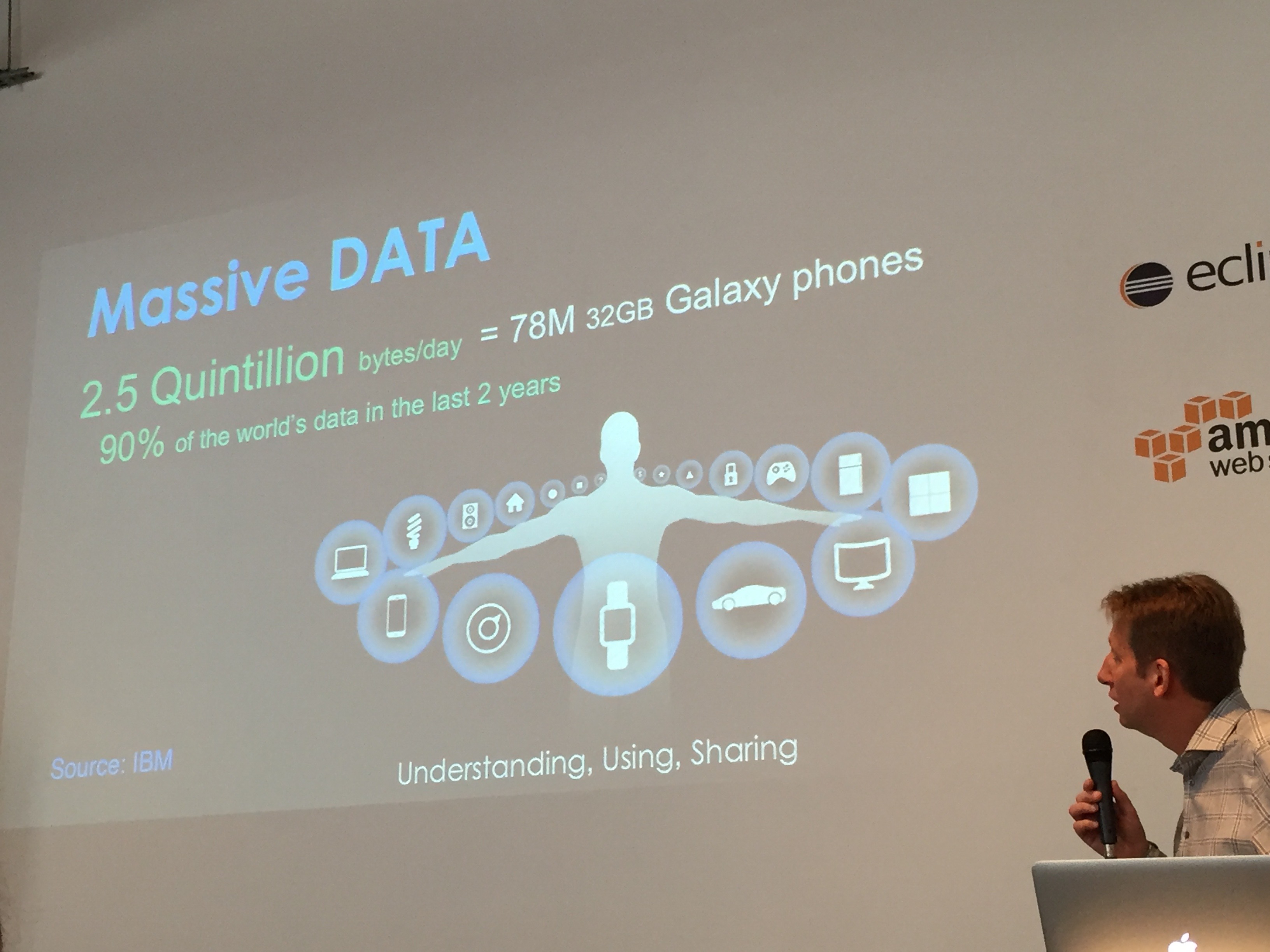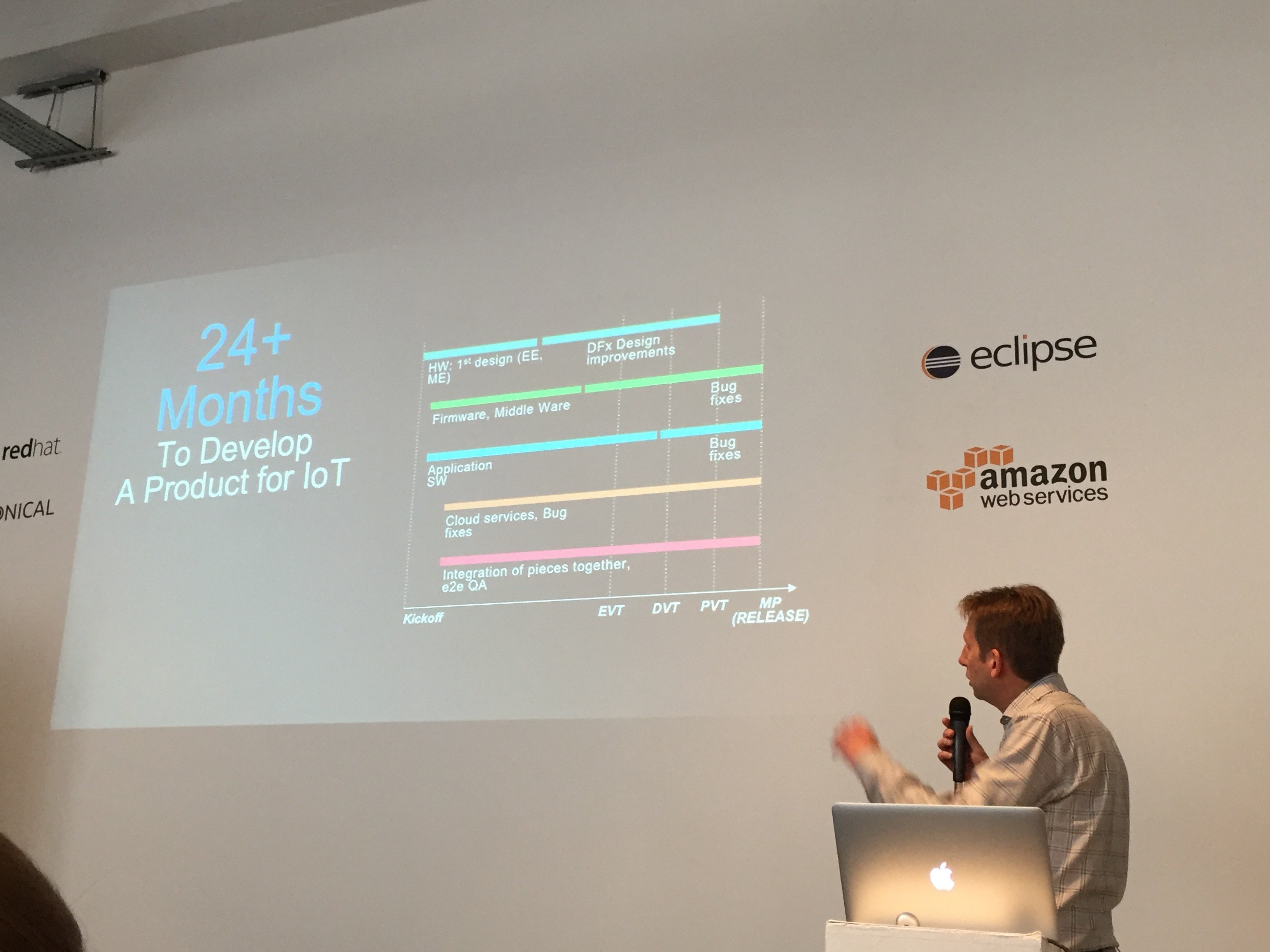Commentary on some of the interesting numbers from ThingMonk Eclipse Day

(Photo credit: Flickr/morebyless under CC-BY 2.0)
2.5 Minutes
Kamil Baczkowicz gave a delightful talk about using IoT to run DeltaRail’s train signaling system. Train signals ensure there is only one train on each section of the track, and an interlocking is the crucial element that brings all the signals together to ensure there aren’t conflicting routes. Interlockings evolved from a manual system of physical levers all the way to an automated, IoT-driven system today.
The blue sections of track on the map below run using Eclipse Paho and Eclipse Mosquitto.
When the train controller controls your train… …there's @mqttorg and @EclipseIoT behind it. #thingmonk pic.twitter.com/rMXJlUFjBA
— Boris Adryan (@BorisAdryan) September 12, 2016
Impressively, this MQTT system has run for 20,000 hours in production with (at least) 99.9995% availability. This equates to no more than about 2.5 minutes of system downtime annually.
IoT at high availability – 99.9995 up time. Yes open source is prime time for IoT #thingmonk pic.twitter.com/seHvXbAMJl
— Ian Skerrett (@IanSkerrett) September 12, 2016
From the MQTT integration with legacy hardware, the robust testing that occurs in an environment with demanding up-time requirements, and particularly its ability to operate in an environment where safety is of the utmost importance, DeltaRail is an impressive example of a practical application of IoT.
(Kamil, I love trains. This talk was my jam.)
2.5 Quintillion
In his talk, Dan Gross mentioned some interesting statistics in support of the need for improved IoT tooling. The world is producing 2.5 quintillion bytes of data every day.
This volume of data is only going to increase as we add more devices to the network. Thingful provides some great visualizations to show the global distribution of connected devices. (There’s something fairly compelling about seeing IoT devices in the middle of the ocean [connected buoys, barges, whales, etc.] to help convince you about the omnipresence of the Internet of Things.)
On top of the need to manage a massive amount of data generated by an increasingly massive number of devices, there is a painfully slow production and development cycle for most IoT products. Dan asserts that the average development cycle for an IoT product could be 2 years.
Dan made the case for quality tooling as a means for improving that development experience and helping wrangle all that data. Samsung partnered with Codenvy and Eclipse Che to create Samsung Artik, an IDE designed specifically for IoT development.
1
As in one very impressive live demo by Patrizia Gufler. Patrizia demonstrated how to connect a Raspberry Pi to the Watson IoT platform using Eclipse Kura as a gateway. She did a great job showing how one can conceivably connect all their home IoT devices to a single application. What’s more, she juggled a handheld mic while typing live code over a sluggish network connection. Frankly I found it to be rather heroic – hats off, Patrizia!
Next up at #thingmonk @EclipseIoT day: @pattyGufler on how to connect @eclipsekura to @IBMWatson #IoT platform. pic.twitter.com/duKEylj27Q
— Benjamin Cabé (@kartben) September 12, 2016
Stay tuned for more ThingMonk coverage as the week progresses, and thanks to all the speakers today for your excellent talks!
Disclosure: Eclipse and IBM (Watson) are current RedMonk clients. AWS and RedHat are also clients and ThingMonk sponsors.



No Comments